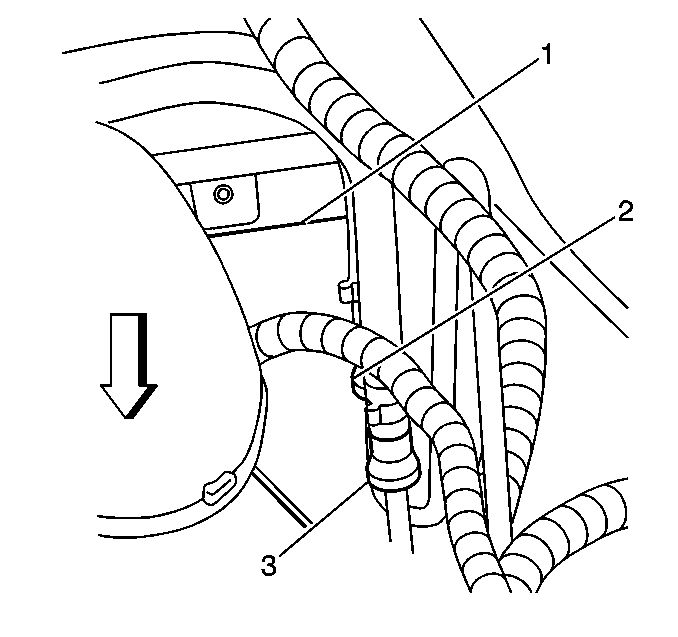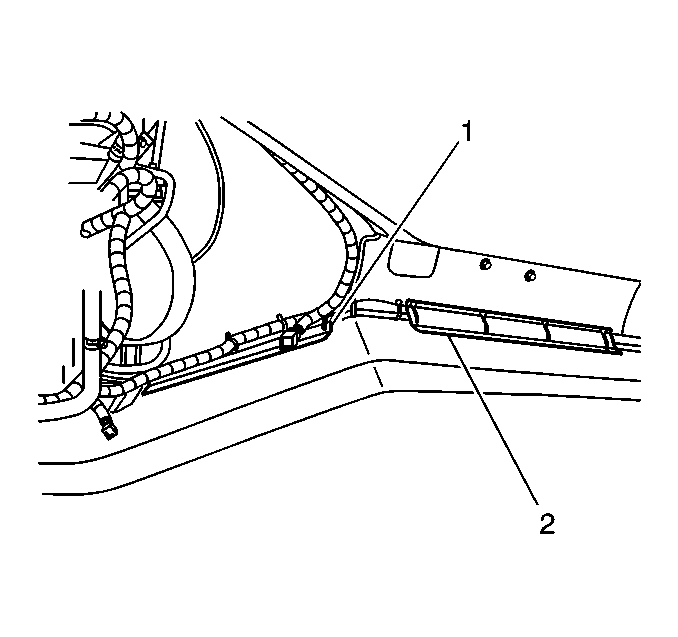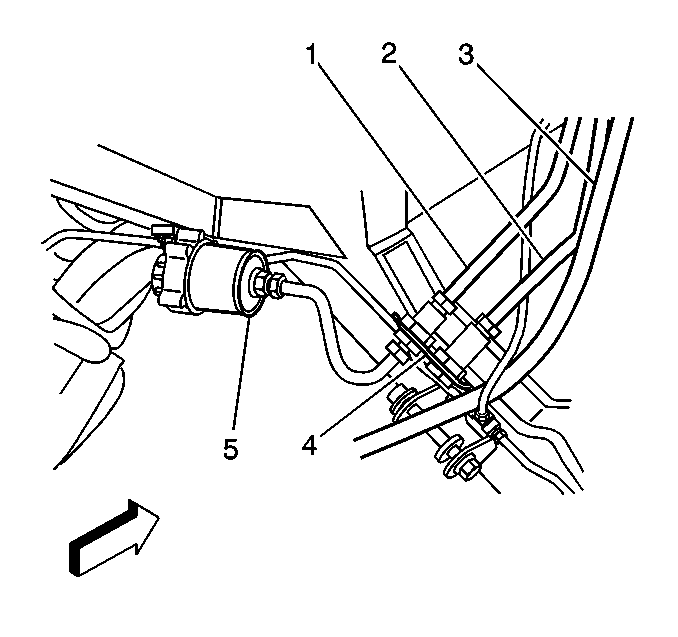Removal Procedure
Tools Required
J 37088-A Tool Set, Fuel Line Quick-Connect Separator
- Disconnect the negative battery cable.
- Relieve the fuel system pressure. Refer to the Fuel Pressure Relief .
- Remove the exhaust system from the back of the converter.
- Clean all the fuel pipe connections and the surrounding areas before disconnecting the pipes in order to avoid possible contamination of the fuel system.
- Disconnect the engine compartment fuel feed pipe (2) from the chassis fuel feed pipe. Refer to Metal Collar Quick Connect Fitting Service .
- Disconnect the engine compartment fuel return pipe (3) from the chassis fuel return pipe (4). Refer to Metal Collar Quick Connect Fitting Service .
- Raise the vehicle. Refer to Lifting and Jacking the Vehicle in General Information.
- Cut the plastic strip ties at the front and rear fuel line shields.
- Disconnect the fuel feed pipe (1) from the rear fuel pipe adapter bracket (4).
- Disconnect the fuel return pipe (2) from the rear fuel pipe adapter bracket (4).
- Remove both of the fuel pipes. Note the position of the fuel pipes for installation.
- Inspect the pipes for bends, kinks, and cracks. Repair or replace the pipes as required.

Caution: Unless directed otherwise, the ignition and start switch must be in the OFF or LOCK position, and all electrical loads must be OFF before servicing any electrical component. Disconnect the negative battery cable to prevent an electrical spark should a tool or equipment come in contact with an exposed electrical terminal. Failure to follow these precautions may result in personal injury and/or damage to the vehicle or its components.
Caution: To avoid any vehicle damage, serious personal injury or death when major components are removed from the vehicle and the vehicle is supported by a hoist, support the vehicle with jack stands at the opposite end from which the components are being removed and strap the vehicle to the hoist.

Slip both of the fuel lines up and over both of the shields.

Installation Procedure
- Position the fuel pipes to the frame rail.
- Install both of the fuel pipes over the front shield (1) and rear shield (2).
- Install both of the fuel pipes to the rear fuel pipe adapter bracket (4).
- Reconnect both of the fuel pipes to the fuel pipe hose quick connect fittings in the engine compartment.
- Install the new plastic strip ties in order to secure the fuel pipes to the front and rear shields. Be sure the fuel pipes do not rub on anything that would cause damage to the fuel pipes.
- Install the exhaust system. Refer to the Exhaust System.
- Install the negative battery cable.
- Inspect for leaks.
- Perform the idle learn procedure. Refer to Idle Learn .

Important: When replacing the fuel or EVAP pipes, always replace them with original equipment or parts that meet the GM specifications for those parts. The replacement pipes must have the same type of fittings as the original pipes in order to ensure the integrity of the connection.
Notice: Use the correct fastener in the correct location. Replacement fasteners must be the correct part number for that application. Fasteners requiring replacement or fasteners requiring the use of thread locking compound or sealant are identified in the service procedure. Do not use paints, lubricants, or corrosion inhibitors on fasteners or fastener joint surfaces unless specified. These coatings affect fastener torque and joint clamping force and may damage the fastener. Use the correct tightening sequence and specifications when installing fasteners in order to avoid damage to parts and systems.



| 8.1. | Turn the ignition switch ON for 2 seconds. |
| 8.2. | Turn the ignition switch OFF for 10 seconds. |
| 8.3. | Turn the ignition switch ON. |
| 8.4. | Inspect for fuel leaks. |
